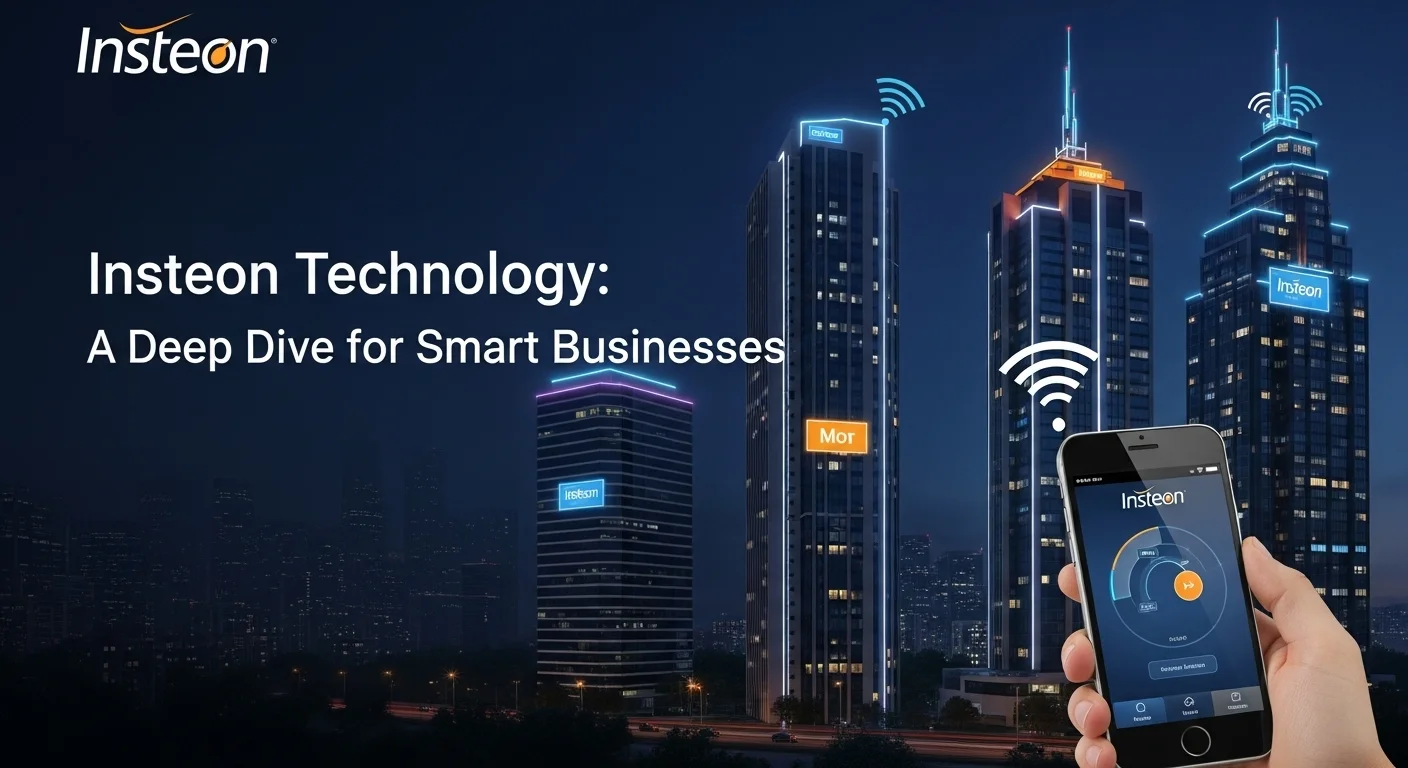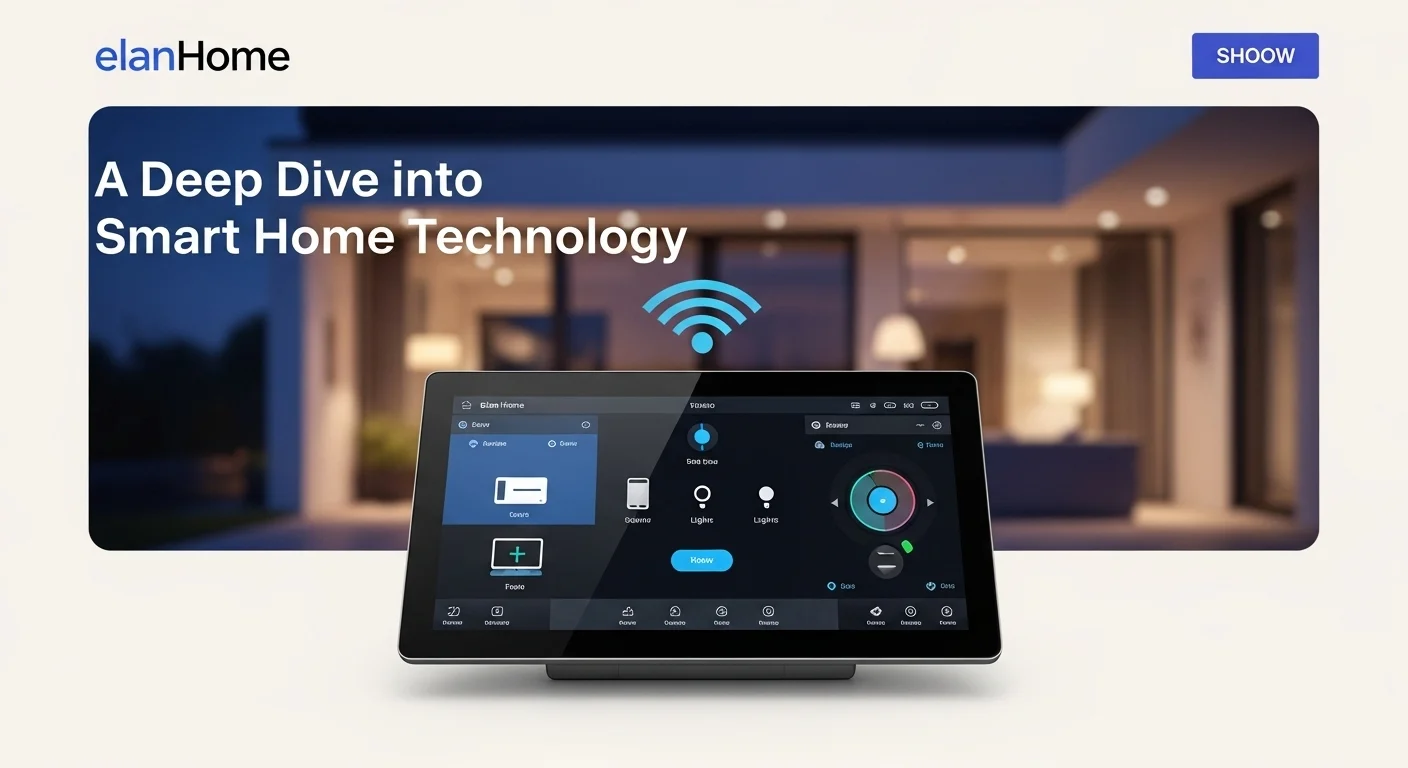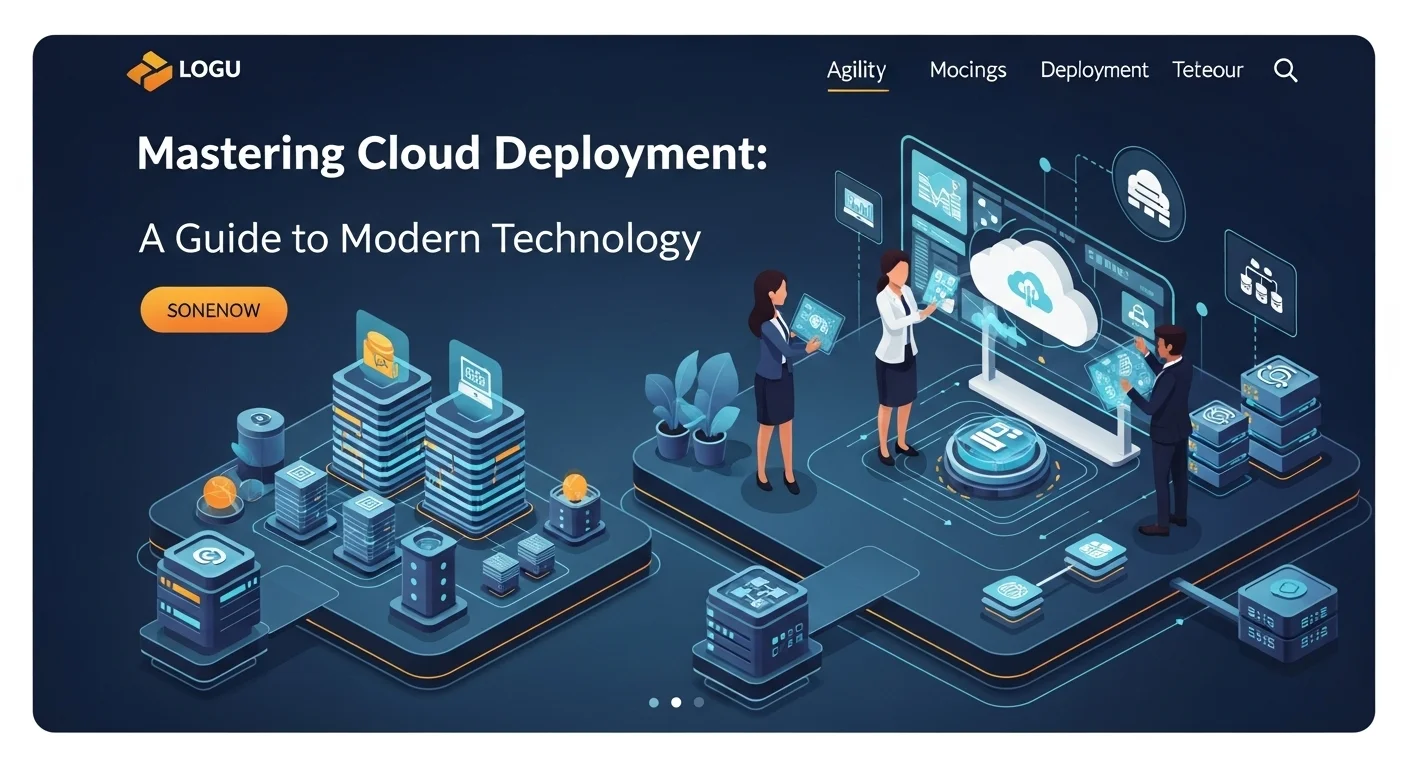Insteon Explained: Why This Smart Tech Is So Reliable (And How You Can Use It)

Executive Summary
In the world of smart homes and businesses, one name has always stood for pure reliability: Insteon. I've seen countless systems, but Insteon's core strength is its unique dual-mesh network, which uses both radio signals and your home's existing electrical wiring to talk. This means messages almost always get through, making it a top choice for anyone who needs their automation to just work. The story of Insteon is also one of incredible resilience. After a sudden shutdown in 2022, the company was brought back to life by a group of its own loyal users—a true testament to its value. In this article, I'll walk you through what makes Insteon tick, from its smart switches to its security sensors. We’ll look at how it can help a business save on energy and improve security, and we'll even touch on advanced setups, like integrating Insteon with high-end Control4 systems for the ultimate smart environment. This is your guide to understanding and using Insteon's powerful technology.
Table of Contents
Table of Contents
- What Is Insteon and Why Should You Care?
- The Comeback Story: A Tale of Resilience
- Why It Matters for Your Business
- The Power of Integration: Insteon and Control4
What Is Insteon and Why Should You Care?
In the crowded world of smart home tech, you’ve probably heard of Z-Wave, Zigbee, and Wi-Fi. But there’s another player, a seasoned veteran named Insteon, that has always prioritized one thing above all else: reliability. I've worked with countless systems over the years, and what has always impressed me about Insteon is its foundation—a patented dual-mesh network. This isn't just a fancy marketing term; it's a real-world advantage. Unlike systems that rely only on wireless signals (RF) or your home's wiring (powerline), Insteon cleverly uses both. Every Insteon device is a team player, able to send, receive, and repeat messages through the air and through the electrical wires in your walls. This dual-path system creates a network that is incredibly robust and self-healing. If your microwave creates RF interference, the message just takes the powerline route. If a noisy appliance messes with the powerline, the RF signal takes over. It's this design that makes the Insteon system one of the most dependable choices out there, which is absolutely critical when you're automating a business and can't afford failures.
The Comeback Story: A Tale of Resilience
To really appreciate Insteon, you have to know its recent history. In April 2022, the company’s servers went dark without any warning. For users who relied on the cloud for remote control or voice commands, their systems were suddenly crippled. It felt like the end for a beloved platform, a cautionary tale about depending on proprietary, cloud-based tech. But that's not where the story ends. In a move that's almost unheard of in the tech world, a small group of passionate Insteon users came together and bought the company. They fired the servers back up and started rebuilding. This incredible turnaround speaks volumes. It shows that the Insteon home automation system isn't just a pile of hardware; it’s a technology that people genuinely rely on and are loyal to. This story is a powerful lesson in community and resilience, proving the system is as resourceful and tough as its users.
Why It Matters for Your Business
In a business, reliability isn't a luxury—it's tied directly to your bottom line. Think about an office that saves money every single month because the lights are guaranteed to turn off after hours. Or a retail store where the perfect lighting and mood are set automatically each day. An Insteon system can deliver that with unmatched consistency. For small and medium-sized businesses, the possibilities are huge. Automated lighting cuts down on energy bills. Smart thermostats keep employees and customers comfortable while saving energy. And the Insteon security system offers a solid way to keep an eye on things. By combining motion, door, and window sensors, a business owner can create a smart monitoring network that sends instant alerts and can even flash the lights to scare off an intruder. One of Insteon’s best features for security is that many devices can talk directly to each other without needing the internet. A sensor can trigger a light all on its own, which means it will still work even if your internet connection is down—a key advantage over many Wi-Fi-based gadgets.
The Power of Integration: Insteon and Control4
While Insteon is a powerhouse on its own, it really shines when integrated with other platforms, especially in high-end projects. The connection between Insteon and Control4 is a perfect example. Control4 is a top-tier system for professional smart home and business automation, but its native lighting controls can be quite expensive. This is where smart integration comes in. A professional installer can use an Insteon system for all the lighting—getting that rock-solid reliability at a better price point—and then bridge it into the main Control4 system. This allows a business to use Control4's slick touchscreens and powerful processors to manage everything. For instance, a 'Presentation' button on a Control4 screen could trigger a complex scene: the Insteon lights dim perfectly, a projector screen lowers, and the AV equipment turns on. This hybrid approach offers the best of both worlds: Insteon's bulletproof foundation with Control4's high-level control. It shows that a well-designed Insteon system isn't a closed box, but a flexible foundation you can build on, making it a smart investment for any demanding environment.

A Complete Guide to Using Insteon in Your Business
Going beyond the basics, you'll find that the Insteon ecosystem is engineered for deep control and performance. To really make a smart decision for your business or a high-end smart home project, you need to understand the technology, the available products, and how it stacks up against the competition. Let’s dive into what makes an Insteon system a truly powerful solution.
The Tech That Makes It Work: Dual-Mesh and Statelink
As I mentioned, the magic of Insteon is its dual-mesh technology, using both powerline and radio frequency (RF). But how does it actually work? When you press a button, the controller sends the command out over both RF and the building's electrical wiring at the same time. Every other dual-band Insteon device hears this message and acts like a repeater, re-broadcasting it on both paths simultaneously. Think of it like a chorus of voices repeating a message, making it stronger and ensuring it reaches the farthest corners of your property. This is very different from systems like Z-Wave or Zigbee, which pass a message from one device to the next in a chain, a process called routing. Insteon’s method is often faster and more direct, especially when you want to control many lights at once. Better yet, the system is designed so that basic links—like a switch talking to a light—work without a central hub or the internet. That's the kind of resilience I look for in a professional setup.
The Building Blocks of Your Insteon System
Building an effective Insteon system involves mixing and matching a range of devices that all speak the same language. Here are the main players:
- Hubs and Controllers: The Insteon Hub is the brain that connects your local network to the internet. This is what lets you use the app, schedule events, and connect to voice assistants like Alexa and Google Assistant. For real power users, there are also advanced controllers from companies like Universal Devices or open-source software like Home Assistant.
- Wall Switches & Dimmers: These are the workhorses of any smart lighting setup. They replace your existing switches and give you complete remote and automated control over your lights.
- Keypads: This is where Insteon really shines for me. A single keypad with 6 or 8 buttons can become a powerful command center. Each button can control a single light, a group of lights, or trigger a complex 'scene' like 'Meeting Mode' or 'Goodnight.'
- Plug-in Modules: Have a lamp or a fan you want to automate? These modules let you add them to your system in seconds, no wiring required.
- Sensors: The Insteon security system is built on reliable sensors for motion, doors and windows, and even water leaks. These can trigger lights, send alerts to your phone, and create simple but effective security routines.
- Specialty Devices: The ecosystem goes even further with thermostats for climate control and I/O modules that let you integrate all sorts of custom-wired devices, making it adaptable for unique business needs.
The Business Case: What’s the Return on Investment?
For a business, investing in automation isn't just about cool tech; it's about real returns. The most obvious ROI comes from energy savings. An office that automatically shuts down all lights at 7 PM and sets the thermostat back will see an immediate drop in its utility bills. You can even set scenes to dim lights automatically during bright, sunny parts of the day. For a small business, the Insteon security system is a cost-effective way to add peace of mind. While it's not a 24/7 monitored service, getting instant alerts on your phone when a door opens after hours, combined with a few IP cameras, is a powerful deterrent against theft. Another key benefit is atmosphere control. Imagine a restaurant where the lighting subtly changes from a bright lunch setting to a warm, intimate dinner mood, all automatically. Creating that consistent, welcoming customer experience is incredibly valuable.
How Insteon Compares to the Competition
It's always smart to know your options. Here’s a quick, real-world comparison:
- Insteon vs. Z-Wave: Both are strong mesh networks. The key difference is Insteon's dual-mesh (powerline + RF) versus Z-Wave's RF-only network. In my experience, Insteon's dual-path communication gives it an edge in reliability, especially in large or complex buildings. Z-Wave, however, has more brands making devices, so you may find more variety there.
- Insteon vs. Zigbee: Zigbee is also RF-only and is an open standard used by brands like Philips Hue. The biggest challenge I've seen with Zigbee is that devices from different companies don't always play nicely together. Insteon, being a single-company ecosystem, guarantees that all its devices work together perfectly.
- Insteon vs. Wi-Fi: Wi-Fi smart devices are simple and don't need a special hub. The downside? Too many of them can clog up your Wi-Fi network. Plus, most are completely useless if your internet goes down. Insteon's dedicated network and ability to work locally make it far more resilient.

Expert Tips to Get the Most Out of Your Insteon System
Getting an Insteon system up and running is fairly simple, but making it truly great requires a bit of insider knowledge. I've deployed these systems in all kinds of environments, from small homes to complex commercial spaces. Here are my go-to strategies to ensure your system is fast, reliable, and incredibly smart.
Best Practices for a Bulletproof Insteon Network
An Insteon home automation system is built for reliability, but you can make it even better by avoiding a few common pitfalls. Follow these tips for a network that just won't quit:
- Bridge Your Power Phases: Most buildings in North America have split-phase power. In simple terms, your electrical panel has two 'legs,' and Insteon powerline signals can have trouble jumping from one to the other. The single most important thing you can do is make sure you have several dual-band devices (like the Hub or plug-in modules) spread throughout your space. These devices listen for a signal on one leg and repeat it via RF, allowing another dual-band device on the other leg to hear it and put it back on the wiring. This creates a bridge and makes your network whole.
- Fight Electrical 'Noise': Many modern gadgets, from TVs to cheap phone chargers, create electrical interference or 'noise' on your wiring, which can disrupt Insteon signals. If one device seems unreliable, look at what else is plugged into that same circuit. You can often find the culprit by unplugging things one by one. For stubborn noise sources, Insteon makes a special plug-in filter called a FilterLinc that isolates the noisy device from the network.
- Be Strategic with Placement: Remember, nearly every Insteon device you plug in acts as a repeater, making the whole network stronger. As you build your system, make sure you have a good distribution of devices. Don't leave large areas of your building without any Insteon products. For battery-powered security sensors, make sure they are close enough to a dual-band device that can hear their RF-only signals.
- Avoid Surge Protectors for Your Hub: Here's something I learned the hard way: never plug your Insteon Hub or modem (PLM) into a standard surge protector strip. The filtering inside these strips is designed to block the very signals Insteon uses to communicate over the powerline. Always plug your Hub or PLM directly into the wall outlet. If you need surge protection, invest in a whole-home protector at your main panel.
Unlock Pro-Level Control with Integrations
The standard Insteon app is fine for daily use, but the real magic happens when you connect it to more powerful platforms. This is how you create a system that is truly adaptable and powerful.
- Home Assistant: For tech enthusiasts who want total control and privacy, Home Assistant is the gold standard. It’s open-source software that you run locally, and it can talk directly to your Insteon Hub without needing the cloud. After the 2022 shutdown scare, many of us in the community moved to Home Assistant for this reason. It lets you build incredibly powerful automations that mix and match Insteon with hundreds of other brands, all running privately in your own home or office.
- Amazon Alexa & Google Assistant: For the convenience of voice control, linking your Insteon Hub to Alexa or Google Assistant is a great move. After the company was revived, they brought this feature back with a small subscription to support the cloud infrastructure. It’s well worth it for the ease of saying, 'Alexa, dim the conference room lights.'
- The Control4 Bridge: As we've discussed, integrating with a high-end system like Control4 is a key strategy for professional jobs. This lets you combine Insteon's cost-effective reliability for lighting with Control4's premium interfaces and broad device control, creating a seamless, top-tier experience. For instance, a 'Presentation' button on a Control4 screen could trigger a complex scene: the Insteon lights dim perfectly, a projector screen lowers, and the AV equipment turns on. This hybrid approach offers the best of both worlds: Insteon's bulletproof foundation with Control4's high-level control. It shows that a well-designed Insteon system isn't a closed box, but a flexible foundation you can build on, making it a smart investment for any demanding environment.
Bringing It All Together: A Small Business Example
Let's imagine a small cafe. The owner uses a local computer running Home Assistant as the central brain. The Insteon system handles all lighting, and an Insteon security system with door sensors monitors the entrances after hours.
Here’s how a typical day looks:
- 6:00 AM - Opening Up: An automated schedule in Home Assistant triggers the 'Morning Prep' scene. Kitchen lights go to 100%, while the dining area lights turn on to a soft 30%.
- 7:00 AM - Open for Business: The system automatically brightens the dining area lights and turns on the 'Open' sign, which is plugged into an Insteon outlet.
- Throughout the Day: The owner has a small Insteon remote hidden behind the counter to manually switch between lighting scenes, like a brighter 'Lunch Rush' or a warmer 'Afternoon Vibe.'
- 10:00 PM - Closing Time: A single 'Closing' scene turns off the open sign and all customer-facing lights, leaving just a few on for cleaning and security.
- Overnight: The system automatically arms itself. If the back door sensor is triggered, Home Assistant instantly sends a push notification to the owner’s phone while flashing every light in the building—a simple but powerful deterrent.
This entire workflow is powerful, reliable, and runs locally without depending on the internet (except for the phone alert). It’s a perfect example of a smart, cost-effective solution for a small business. For those looking to dive deeper into these advanced setups, the official Home Assistant Insteon Integration documentation is an excellent resource.
Expert Reviews & Testimonials
Sarah Johnson, Business Owner ⭐⭐⭐⭐
As a small shop owner, I found the overview of Insteon's reliability helpful. I was hoping for a few more detailed examples on how a retail space could use the security features, but the cafe example in the last section gave me some great ideas.
Mike Chen, IT Consultant ⭐⭐⭐⭐
Great deep dive into Insteon's tech. As an IT guy, I appreciated the comparison to Z-Wave and Zigbee. The explanation of the dual-mesh network finally made sense to me. Well-written and clear.
Emma Davis, Tech Expert ⭐⭐⭐⭐⭐
This is hands-down one of the best articles I've read on Insteon. The story of the company's collapse and user-led revival was inspiring. It covers everything from the basics to advanced integrations like Control4 without being overly technical. A must-read for any home automation enthusiast.



